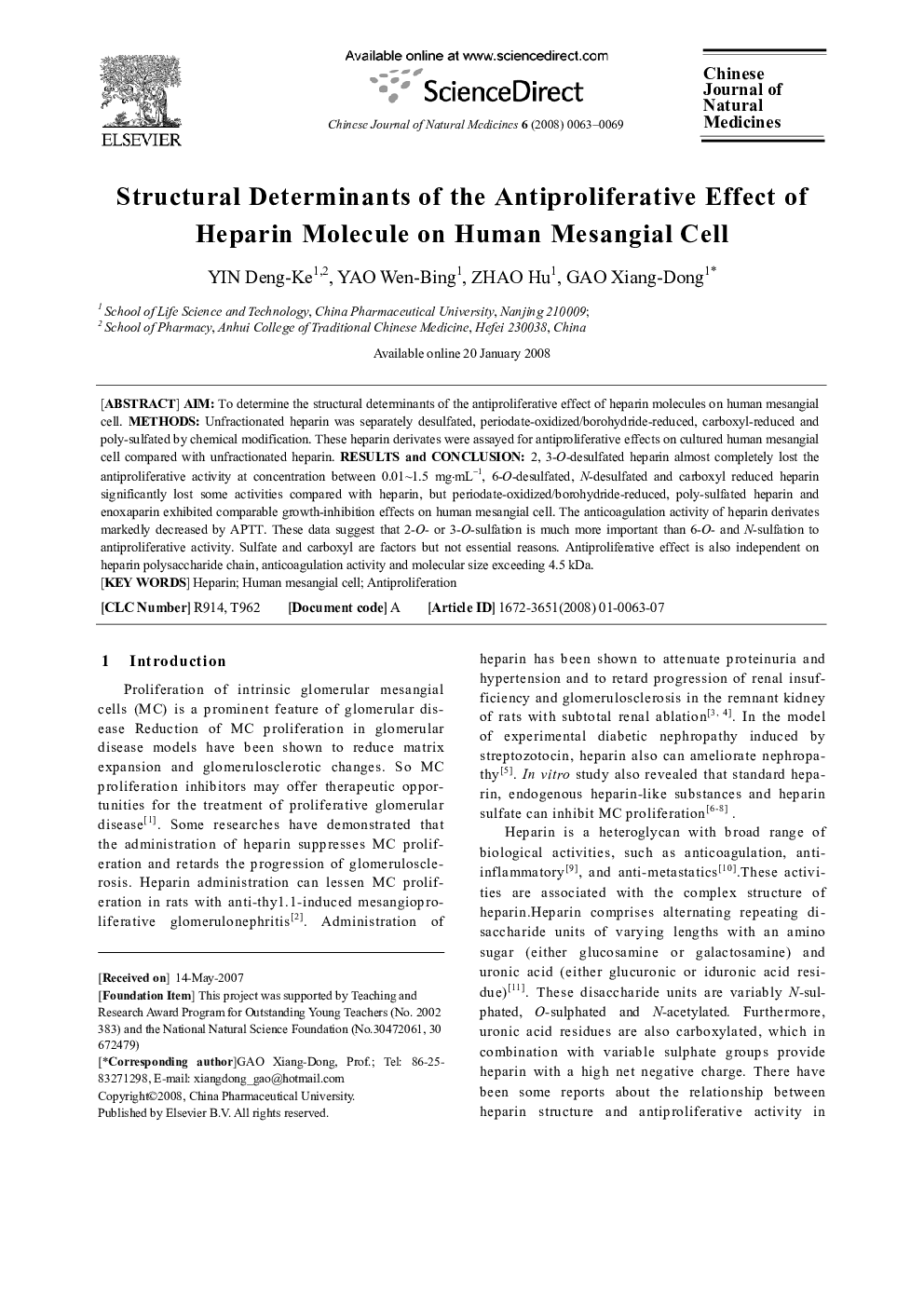| Article ID | Journal | Published Year | Pages | File Type |
|---|---|---|---|---|
| 2526936 | Chinese Journal of Natural Medicines | 2008 | 7 Pages |
ABSTRACTAIMTo determine the structural determinants of the antiproliferative effect of heparin molecules on human mesangial cell.METHODSUnfractionated heparin was separately desulfated, periodate-oxidized/borohydride-reduced, carboxyl-reduced and poly-sulfated by chemical modification. These heparin derivates were assayed for antiproliferative effects on cultured human mesangial cell compared with unfractionated heparin.RESULTS and CONCLUSION2, 3-O-desulfated heparin almost completely lost the antiproliferative activity at concentration between 0.01∼1.5 mg·mL−1, 6-O-desulfated, N-desulfated and carboxyl reduced heparin significantly lost some activities compared with heparin, but periodate-oxidized/borohydride-reduced, poly-sulfated heparin and enoxaparin exhibited comparable growth-inhibition effects on human mesangial cell. The anticoagulation activity of heparin derivates markedly decreased by APTT. These data suggest that 2-O- or 3-O-sulfation is much more important than 6-O- and N-sulfation to antiproliferative activity. Sulfate and carboxyl are factors but not essential reasons. Antiproliferative effect is also independent on heparin polysaccharide chain, anticoagulation activity and molecular size exceeding 4.5 kDa.
